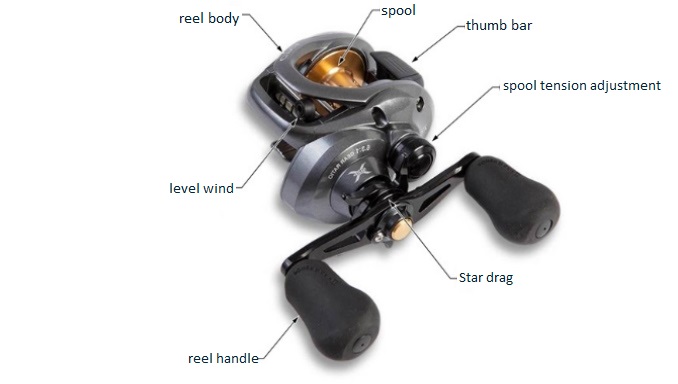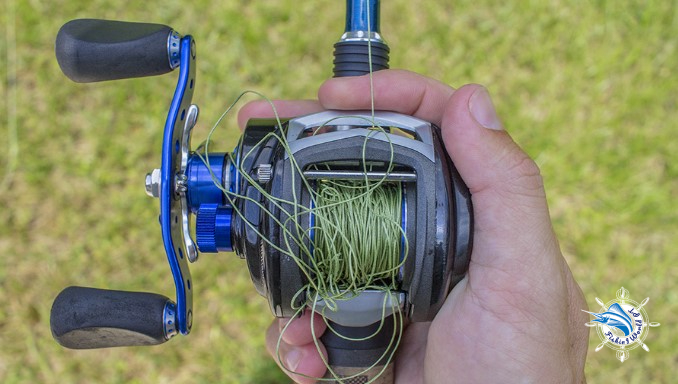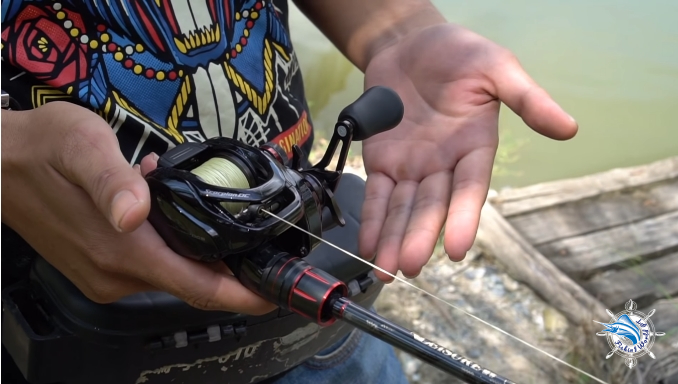If you are a person who has mastered spinning reels, you will feel that spinning has quite a few steps to take when casting. And to increase the feeling when fishing for you. This article will introduce an extremely high-quality fishing, the Baitcaster.
How to use baitcaster reel? That is a common question when switching to using this reel. Baitcaster has some disadvantages with tangles, but they won’t be a problem once you’ve mastered them. It will be an addictive fishing experience for you.
In the previous article, I helped you learn about spinning reels. You can review it here: How To Cast A Spinning Reel?
In this article, I will help you learn about Baitcaster. Those of you who don’t use baitcaster can also refer to it. Let’s get started!
Parts of a baitcasting reel
Of course, we must first know what they are? What parts are included, and how do they work?
Similar to a spinning reel, although a little different, the structure of a baitcaster is not too complicated. They include the following main parts:
- Drag: This is a star-shaped drag adjustment system. Its function is similar to the Drag adjustment knob on the spinning top. Its effect is to increase or decrease the braking force of the reel when the fish runs away. The fish runs away after biting.
- Spool: Also known as line spool, the line will be rolled evenly on this spool after pulling. Spools are usually made from extremely light and strong materials such as carbon or anodized aluminum alloys. To reduce the total weight of the reel.

- Break: Brake system, brake line. This is a very important system in reel parts. Usually, there are three types of brakes: SVS brake, magnetic brake, and DC brake. Depending on the type of brake, there will be different uses.
- Spool Release Button (Thumb bar): Button to release spool, discharge module.
- Spool Tension Knob: This button has the effect of adjusting the line output of the baitcaster, depending on the weight of the bait. Drop the bait from above to low while observing and adjusting this button. If you see that the fishing line comes out evenly and is not tangled, then the requirements are met.
- Reel handle: Unlike the handle of the spinning, the handle of the baitcaster cannot be changed. So when buying, you must buy the type with the handle located on your dominant hand.
- Line Guide: Where line come out
How to use baitcaster reel
After you have been able to distinguish the parts on the baitcasting and their functions. In this section I will guide you step by step to play a baitcaster.
First I’ll show you how to weigh the bait and adjust the brakes, then I’ll show you how to cast. There are many types of cast with baitcaster: Overhead, Side cast, Roll pitching and Pitching.
Why you should use baitcaster for lure fishing. Because the baitcaster works faster than spinning reel.

How to weigh the bait and set up the brakes
First, when you attach the lure to the line. Click on the thumb bar for the bait to drop. If the bait falls too fast, the line will get tangled. You will then adjust the spool tension knob so that the bait falls gently and the line is no longer tangled.
With the brake, you adjust 2 on and 2 off with the inside brake and set it in 3rd gear with the outside brake.
If such an adjustment does not work for you, you can adjust it another way. It’s okay, you’ll get used to it slowly.
How to cast a baitcasting reel
With casting a baitcasting, the thumb plays a very important role. Using baitcasting is like playing with their thumb for advanced anglers, which is very gentle and artistic. Maybe I should call them artists? I’m just kidding, but it’s true.
The way to hold the fishing rod is different from the spinning reel. There will be no reel foot, instead of a protrusion in the handle of the specialized Baitcaster rod. 2 front and 2 back fingers, up to you.
When you cast, use the thumb of the hand holding the reel to hold the lines, so they don’t come out while casting. When the rod’s tip points to the direction to cast, release your thumb from the spool to let the lure pull the line and fly away.
You watch the bait fly away. When they hit the water, immediately hold your thumb in the spool to let the friction slow down the line. The brakes are made for this, but I think you should too. Otherwise, the line will tangle and create “a bird’s nest”. Birds will love you. Do you love birds?

Overhead: This technique is for anglers who want to cast long-distance and have open terrain around. Move the rod behind you, place it at 2 o’clock. Sweep the rod forward until it reaches 11 o’clock, releasing the thumb from the spool. Hold the thumb back to the spool when the bait hits the water.
Side cast: for places with obstacles on the head. Depending on you, we will cast to left or right with this technique. Like how you play tennis, I think this is a great technique.
Flipping and Pitching: For the place where you don’t have to cast a long-distance. These two techniques are quite similar. Use wrist force to swing the fishing rod to make the bait fly away.
Questions and answers
These are the questions someone asked me:
“How to cast a baitcaster reel without tangles?” — Even when I play, my baitcaster is still tanged as usual if I am careless. No matter how many years you played, 10 years or 20 years, if you are not careful you can still get tangled.
If you don’t want to get tangled up, play a spinning reel.
“I can’t cast a long-distance with a baitcaster, what should I do?” — I think you need a heavier lure because the parameters of the baitcaster are only to a certain extent.
Conclusion
You already have the answer to the “How to use baitcaster reel?”. Remember, everything depends on your personal preferences. Any reels are expensive or cheap, it will still be useless if you can’t master them. Good luck!
I hope this article is helpful to you. Do you have another idea?
Further reading:
- Other info about fishing in Fishingandhuntingsports
- Fishing reel Wikipedia
- How To Cast A Spinning Reel?

